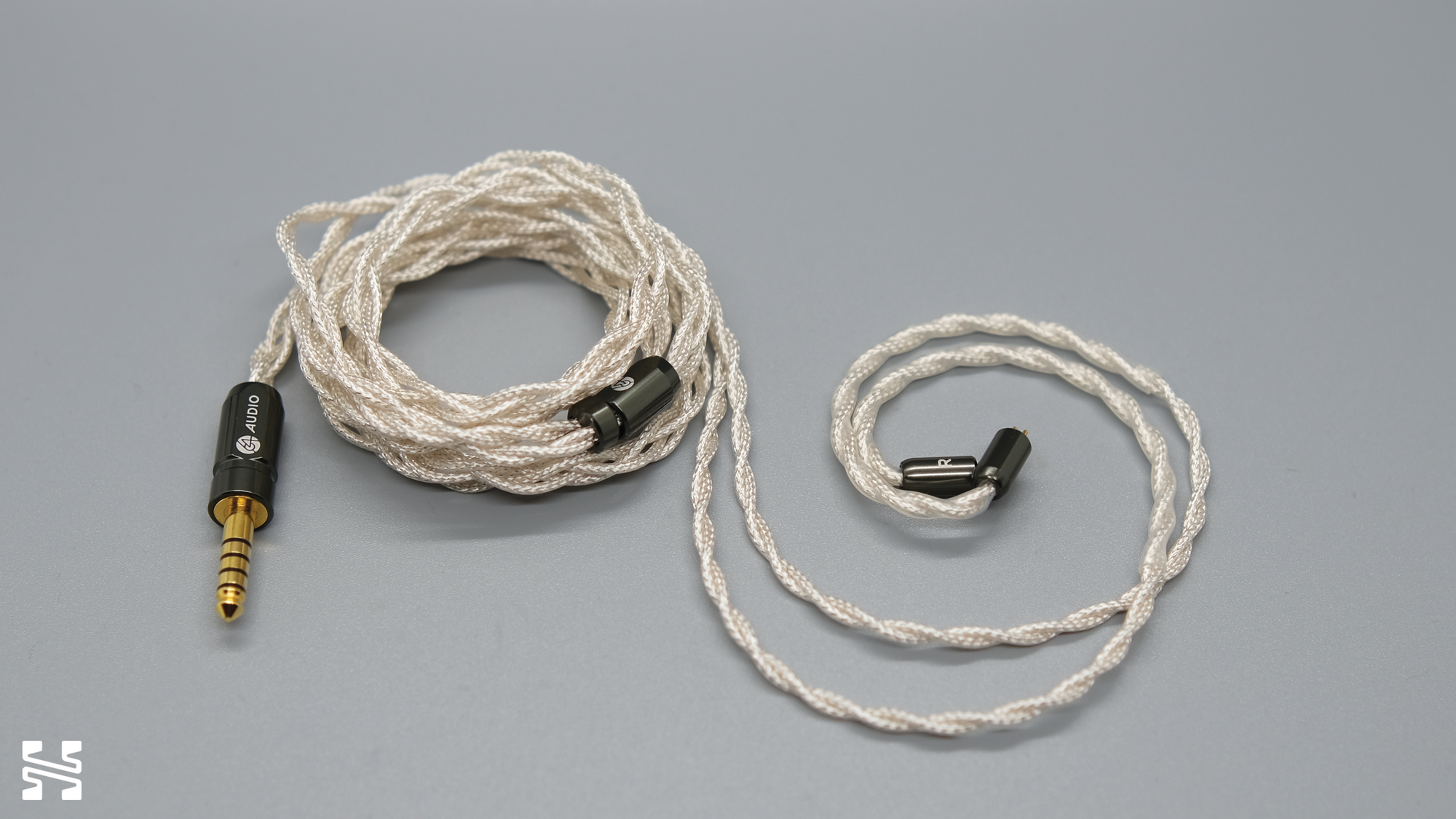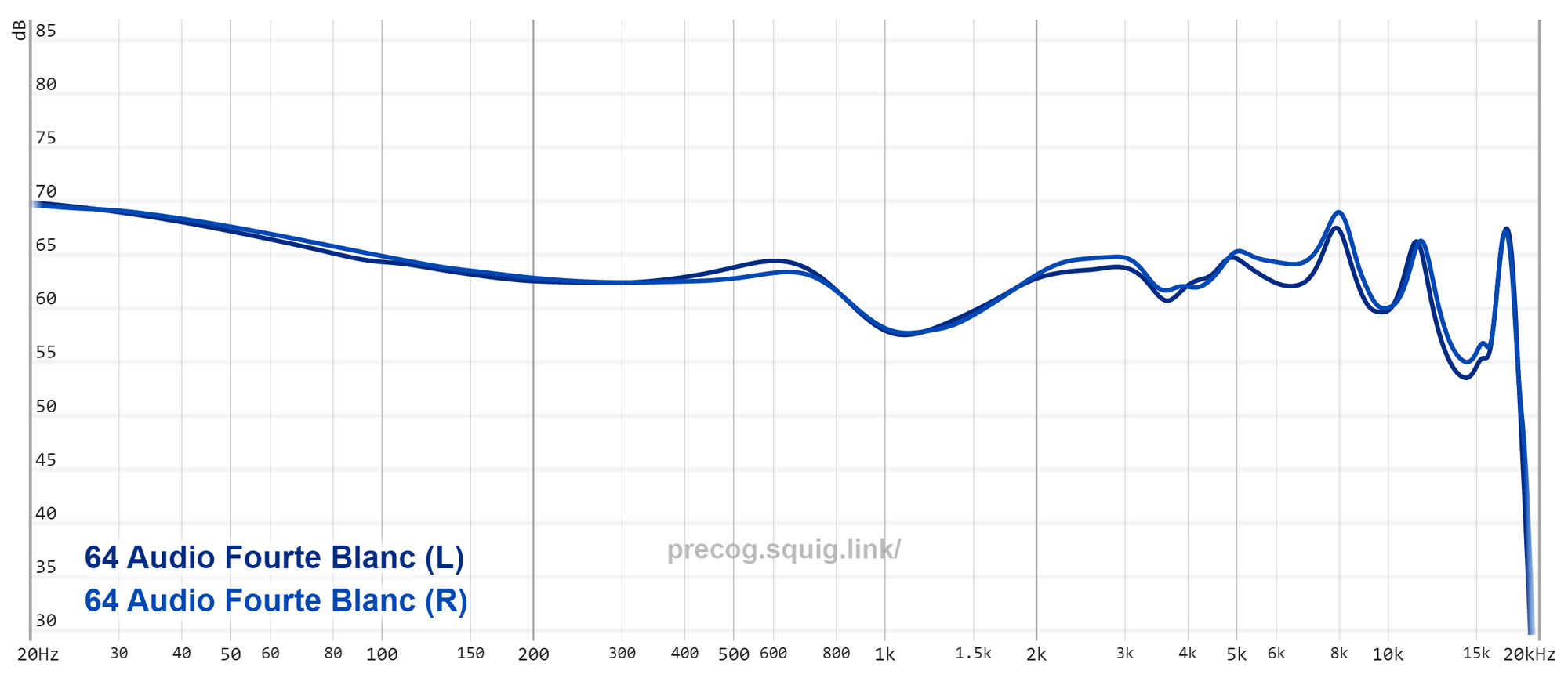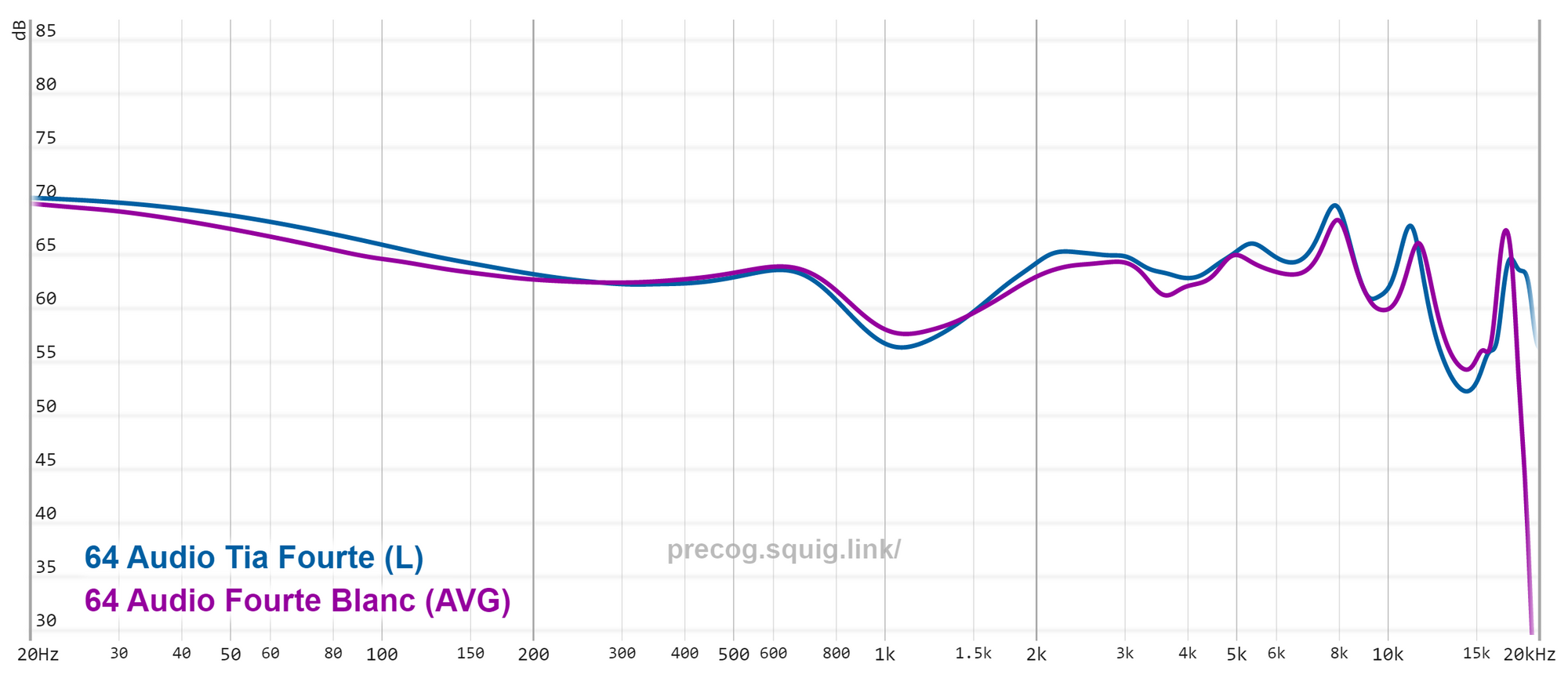64 Audio Fourte Blanc - Measurements & Impressions

Introduction
Product photography by Chitoh Yung (@chitohgraphy)
Out of no less than eight “flagship” tier products in 64A’s diverse IEM lineup, one towers above them all: the Fourte. The Fourte is the company’s most expensive IEM. And possibly the most polarizing too, from its…unique sound signature and (in my humble opinion) somewhat underwhelming aesthetics. Perhaps for this reason, it was decided that the Fourte would be receiving a re-interpretation in the form of the Fourte Blanc. Incidentally, this is actually the second limited edition run of the Fourte - the first being the Fourte Noir - begging the question of whether we finally have a version of the Fourte that delivers.
Physical Build

Now, credit where credit is due, 64A has nailed the aesthetics of the Blanc, and it’s an unequivocal upgrade from its contemporary in this department. Both the Blanc’s white ceramic coating and new faceplate have a glossy sheen to them, and they feel premium to the touch. For context, the original Fourte’s shell had a powdery, more textured tactility and the faceplate felt more like a sticker. Big win in the aesthetics department for the Blanc - at least in my opinion.

The cables included with the Blanc also feel like massive strides. And yes, I said cable(s) plural. The Blanc includes an additional 4.4mm balanced cable alongside a standard 3.5mm one. I’ve had a lot of criticisms of 64A’s cables in the past, but I think we’ve finally gotten to a point where I’m satisfied with the company’s cables. The 3.5mm cable has angled 2-pin connectors to mitigate strain, metal hardware, and generally feels premium. The 4.4mm balanced cable takes things a step even further with a thicker, but slightly more pliable twist to the strands and immaculately machined, custom hardware. I don’t know if this cable is $999 good (I don’t think any cable is worth this much), but it’s definitely good even by my high standards for build quality.
Sound Talk
Clearly, 64A has made excellent strides enhancing one aspect of the Fourte. But have they delivered in the sound department? To answer this question, let’s take a step back. I actually made first contact with the prototype that would become the Blanc all the way back in April of 2022. When I first heard the prototype, I wrote down some brief impressions:
Sounded more like the Tia Trio in my opinion. Slightly less bass than Trio but still sub-bass focused. More 3-5kHz than their other models and slightly sibilant. Pretty bright, really good resolution.
Admittedly, I think that the production version of the Blanc that I have on hand now sounds different (mostly with respect to the level of elevation from 1-5kHz), but my memory is far too fuzzy at this point to really verify. One thing is abundantly clear either way: I am not particularly enthusiastic about the sound of the production version Blanc, and it is best considered an acquired taste like the original Fourte.


Now, to the Blanc’s credit, it does have measurable adjustments to its bass response. It’s been reigned in for a cleaner sub-bass focus and eschewed some of the puffiness that I recall plaguing its predecessor. But I still don’t find the Blanc’s bass to be noteworthy for a sense of attack incisiveness, and it doesn’t hold a candle to something like the Sony IER-Z1R (which I have for direct A/B and don’t even find entirely impressive for bass these days) or 64A's own Tia Trio.
To go back to the comments on acquired taste, something that I cannot turn a blind eye to every time I hear the Fourte (and by extension the Blanc) is the midrange. It is extremely recessed around 1kHz. This leads to something of a cross between singers - especially those of the soprano persuasion - sounding like they are holding their nose, and singing into a cup, with me listening to the reverb.
Perhaps what makes this phenomenon all the more uncanny is the excellent resolution of the Blanc that stems from the treble response. No way about it, the Blanc is a bright IEM. It doesn’t necessarily sound like it peaks in one specific region to wholly throw off treble tonality, it’s just…again, bright. Too bright, really, for a lot of tracks that I listen to.
Love our in-depth reviews?
We test and review hundreds of headphones every year. Sign up to get the latest news, reviews, guides, and more in your inbox. Join the 60,000+ like-minded audio lovers who love our newsletter!
There is not really much point in talking about the technicalities of the Blanc because it is an IEM that is capsized by inception, for me, by virtue of its tonality. But as I alluded to above, yes, it is very detailed. It sounds very open. It is fairly dynamic. I question how much of these impressions are a product of its very unique tonality, but I digress.
Takeaway
If you are someone in the market for a Fourte, then the Blanc is undoubtedly the better buy. The sound is a little more refined, the aesthetics are way nicer (in my opinion), and the extra cable tips the value proposition. And when you think about it, adjusting for inflation, the Fourte would be much more expensive today (by roughly 20%) than when it was released in 2017 making the Blanc an even better “value” by comparison. But speaking of comparison, I think the better question might be the following: who’s in the market for a Fourte in the first place when the Tia Trio exists? What I would like to see is a special edition of the Tia Trio because these shells of the Blanc, and the new cables, are truly excellent steps forward irrespective of what I think of the sound.
